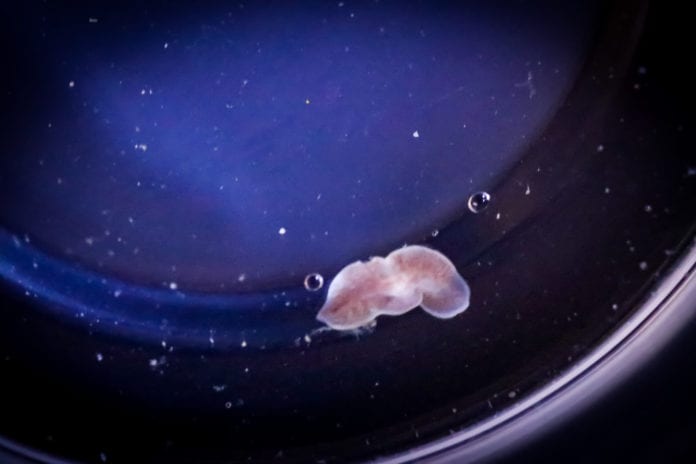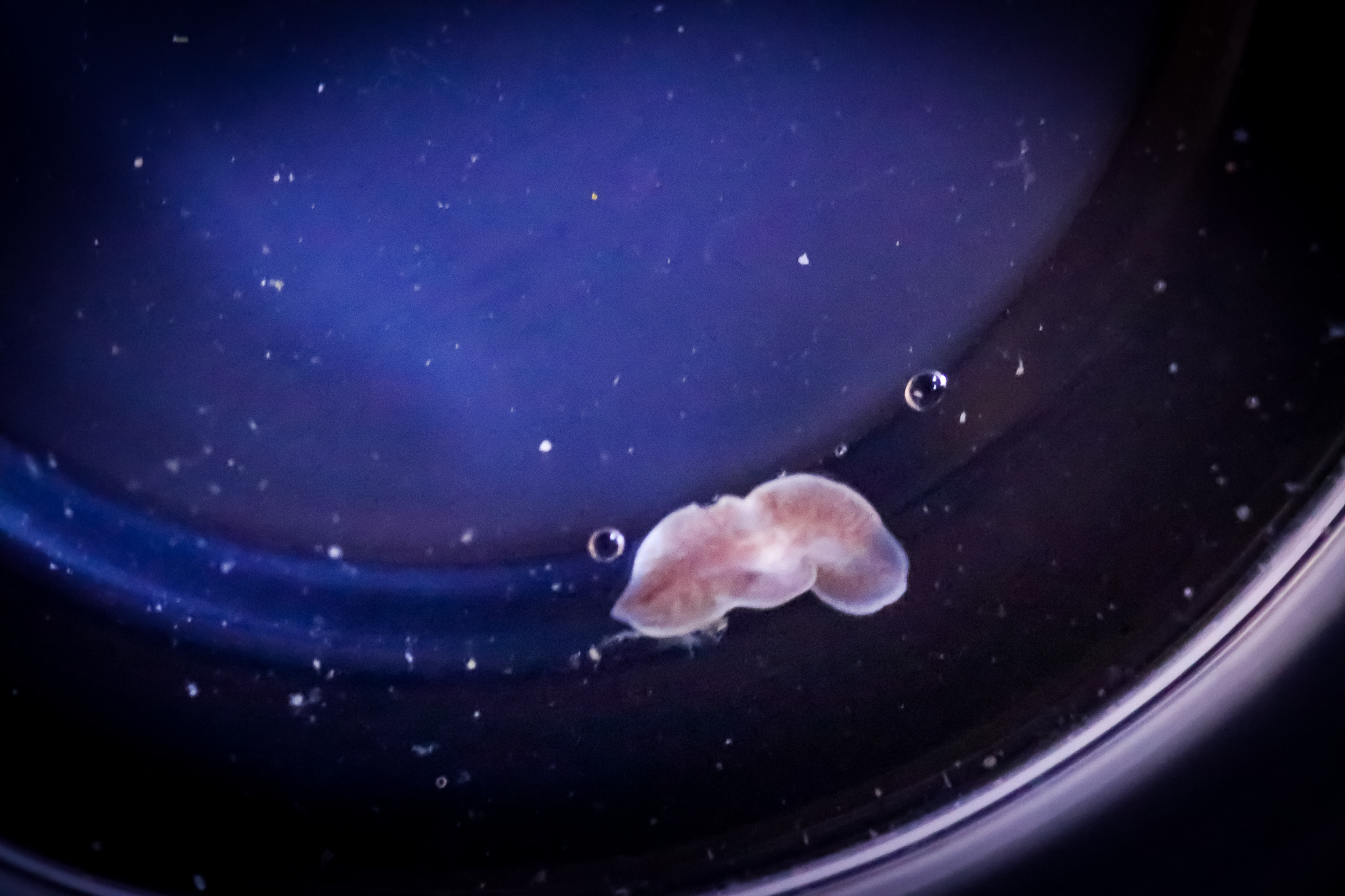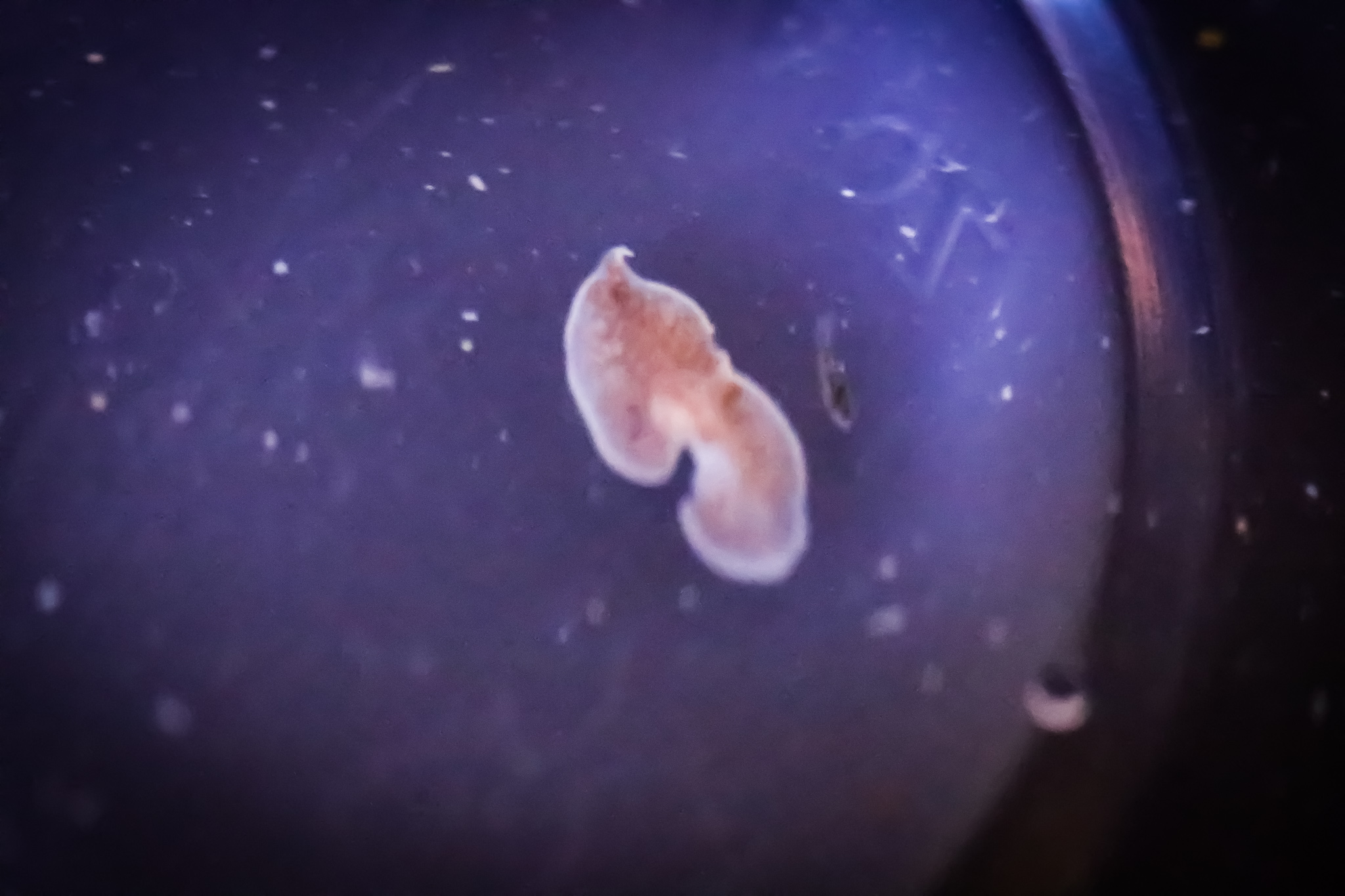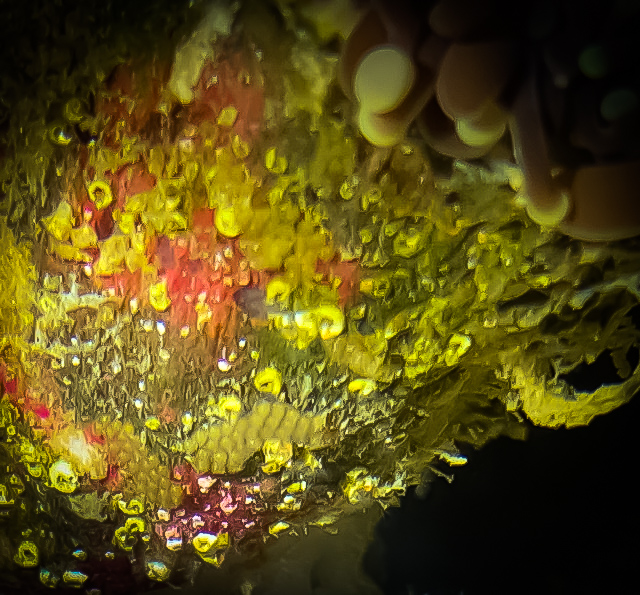While cleaning my reef tank I noticed something peculiar. A head off of one of my Aussie torch corals was retracted while the others were out and about swaying with the flow. This isn’t that uncommon, especially if the coral is excreting waste, but I didn’t see anything. A few days later two heads were retracted. My water parameters were fine. Dumbfounded, I took a flashlight at night and visually inspected the coral. Nothing was out of the ordinary, or so I thought.
By coincidence while target feeding my coral one evening, I saw something at the base of my torch. It turned out to be a Polyclad Flatworm of the family Polycladida. The species in my tank only measured to about an inch and their transparent brownish color was the perfect camouflage.
Some flatworms such as the Ghost Flatworm are completely harmless, while others are predatory. This species didn’t seem to be eating the torch coral, but rather irritating it, causing it do recede to the point of death. After a little research about possible treatments I decided to dip my torch.
I used Coral RX per the directions and within a few minutes 4 or 5 Polyclad Flatworms seemingly started to spill out of the torch coral itself. This Euphyllia menacing Polyclad Flatworm lays its eggs along the body of the skeletal structure up to where the polyps extend out of the skeleton. The eggs can also be difficult to spot. More importantly, dipping will do absolutely nothing to Polyclad Flatworm eggs.
Before dipping the coral I used a soft narrow bristle toothbrush and scrubbed the eggs off. After dipping the coral for five minutes I placed it in quarantine. 48 hours later I examined the coral closely and scrubbed off a few more eggs. I then re dipped the torch. Good thing I did, because there was one still embedded within the coral. It was touch and go for a week or two, but my torch did recover eventually.
After examining my other Euphyllia corals, to my amazement this was the only one with an infestation. It’s rumored that different types of Wrasses will eradicate Polyclad and other flatworms, however I wouldn’t bet on it as this species of Polyclad is nocturnal. My reef tank has a Six-Line Wrasse, Melanurus Wrasse as well as a Yellow Coris Wrasse all of which either bury themselves in the sand at night or hide until the morning.
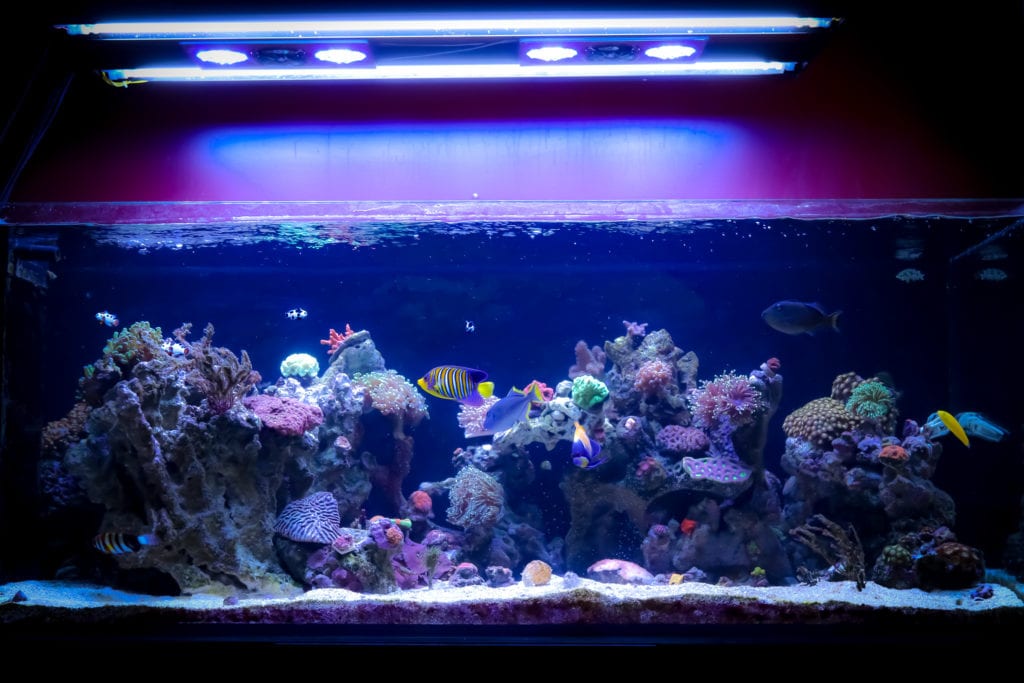
Aside from prevention, the best bet at eradication is to dip the affected coral 2-3 times over a week long period while also carefully brushing away any eggs that may be present. An R/O dip will also work with juvenile and adult Polyclad Flatworms, but manual extraction is necessary to remove the eggs. Good luck and happy reefing !

